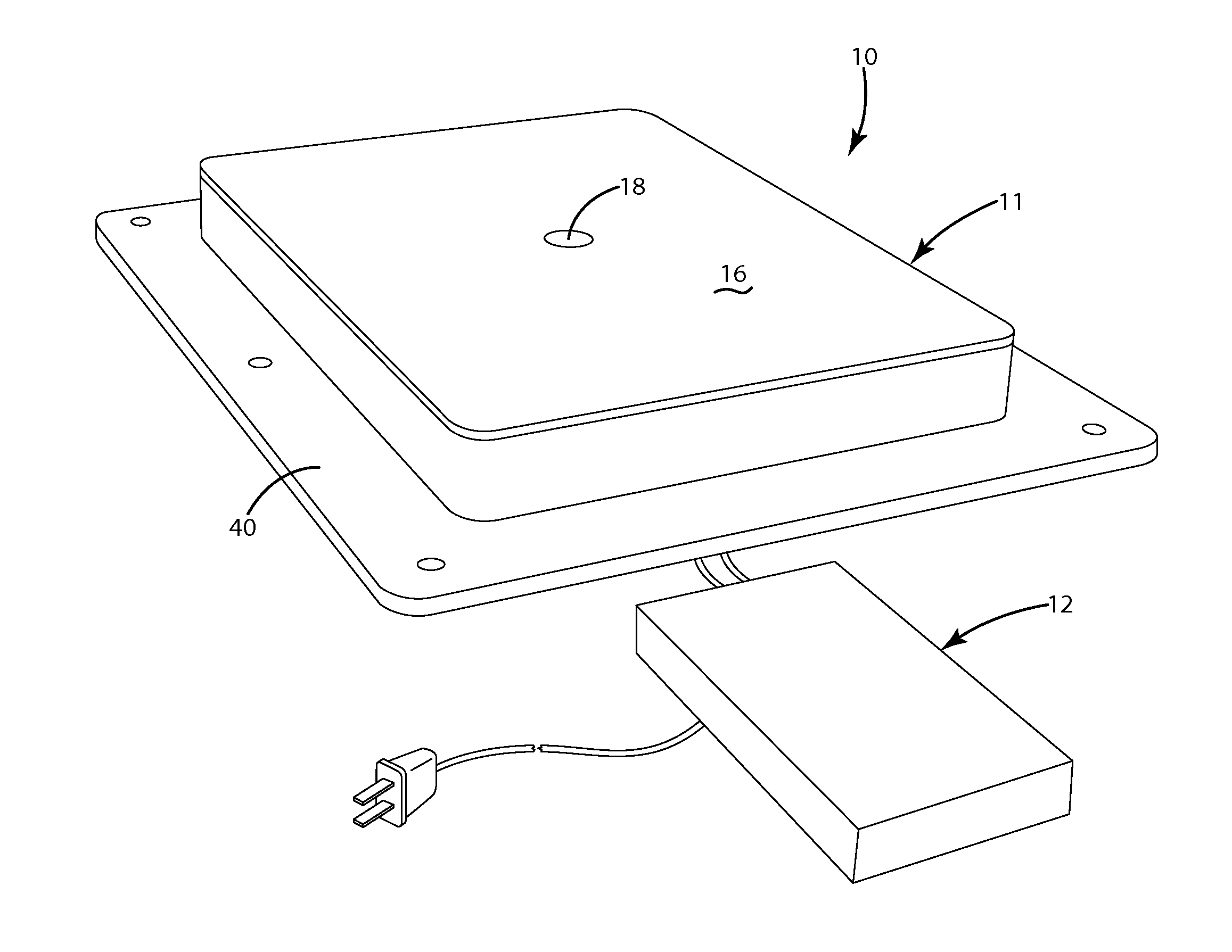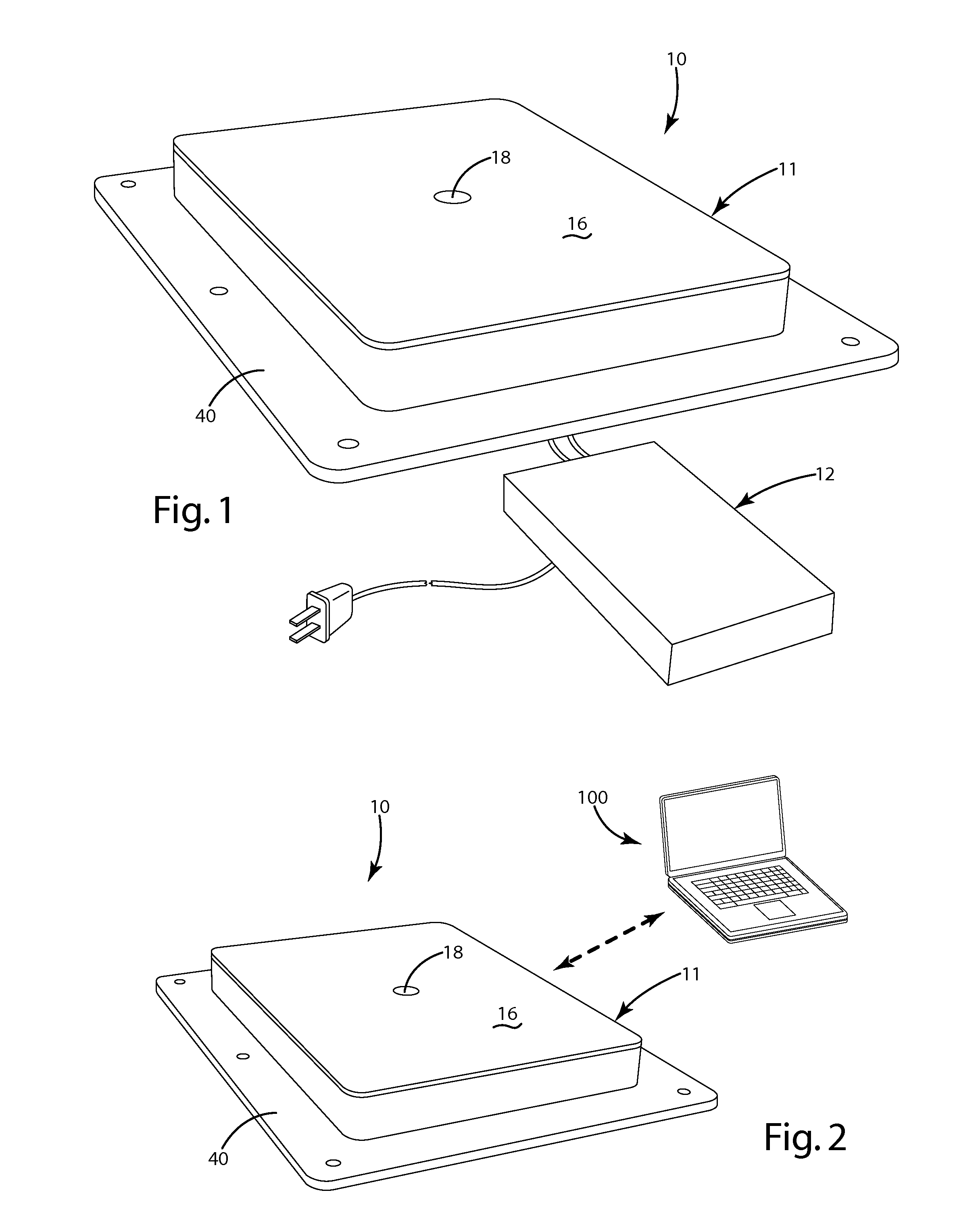Inductive power supply
a technology secondary coil, which is applied in the direction of inductance, transformer, poultry processing, etc., can solve the problems of limiting the use of inductive power supply, burdensome and aesthetically unpleasing, and limiting the interchangeability of multiple devices containing secondary coils, so as to reduce the footprint
- Summary
- Abstract
- Description
- Claims
- Application Information
AI Technical Summary
Benefits of technology
Problems solved by technology
Method used
Image
Examples
Embodiment Construction
[0071]A wireless power supply 10 in accordance with an embodiment of the present invention is shown in FIG. 1. The wireless power supply 10 generally includes a housing 11 containing power supply circuitry 12, including a primary 14 for generating an inductive field. The housing 12 includes a charging surface 16 upon which a remote device, such as a portable electronic device (e.g. laptop 100), can be removably placed to receive wireless charging / power. The wireless power supply 10 includes a plunger 18 disposed in the charging surface 16. The plunger 18 is extendable / retractable with respect to the charging surface 16. The plunger 18 may be extended to provide a structure to mechanically interconnect with and align a remote device, and retracted to provide a generally flush charging surface 16 when no device is placed on the wireless power supply 10. The electronic device 100 may include a socket 106 adapted to interfit with the plunger 18 (See FIG. 5). In the illustrated embodimen...
PUM
| Property | Measurement | Unit |
|---|---|---|
| power | aaaaa | aaaaa |
| electromagnetic field | aaaaa | aaaaa |
| movement | aaaaa | aaaaa |
Abstract
Description
Claims
Application Information
 Login to View More
Login to View More - R&D
- Intellectual Property
- Life Sciences
- Materials
- Tech Scout
- Unparalleled Data Quality
- Higher Quality Content
- 60% Fewer Hallucinations
Browse by: Latest US Patents, China's latest patents, Technical Efficacy Thesaurus, Application Domain, Technology Topic, Popular Technical Reports.
© 2025 PatSnap. All rights reserved.Legal|Privacy policy|Modern Slavery Act Transparency Statement|Sitemap|About US| Contact US: help@patsnap.com



